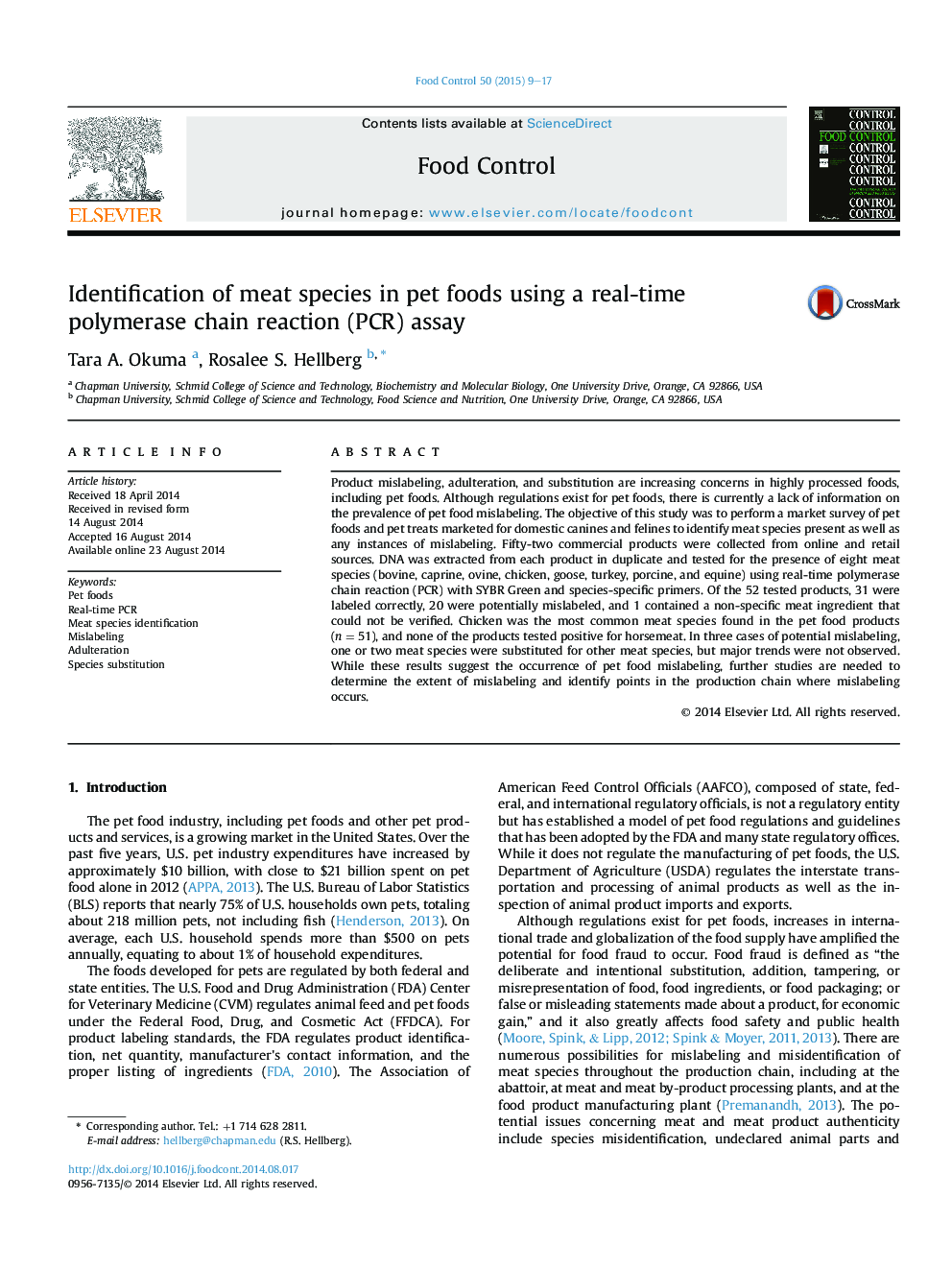| Article ID | Journal | Published Year | Pages | File Type |
|---|---|---|---|---|
| 6390919 | Food Control | 2015 | 9 Pages |
â¢Out of 52 commercial pet food products tested, 20 were potentially mislabeled.â¢Three cases of possible species substitution were detected.â¢There were no major trends for substitution of one species for another.â¢Further studies are needed to identify the points at which mislabeling occurs.
Product mislabeling, adulteration, and substitution are increasing concerns in highly processed foods, including pet foods. Although regulations exist for pet foods, there is currently a lack of information on the prevalence of pet food mislabeling. The objective of this study was to perform a market survey of pet foods and pet treats marketed for domestic canines and felines to identify meat species present as well as any instances of mislabeling. Fifty-two commercial products were collected from online and retail sources. DNA was extracted from each product in duplicate and tested for the presence of eight meat species (bovine, caprine, ovine, chicken, goose, turkey, porcine, and equine) using real-time polymerase chain reaction (PCR) with SYBR Green and species-specific primers. Of the 52 tested products, 31 were labeled correctly, 20 were potentially mislabeled, and 1 contained a non-specific meat ingredient that could not be verified. Chicken was the most common meat species found in the pet food products (n = 51), and none of the products tested positive for horsemeat. In three cases of potential mislabeling, one or two meat species were substituted for other meat species, but major trends were not observed. While these results suggest the occurrence of pet food mislabeling, further studies are needed to determine the extent of mislabeling and identify points in the production chain where mislabeling occurs.
